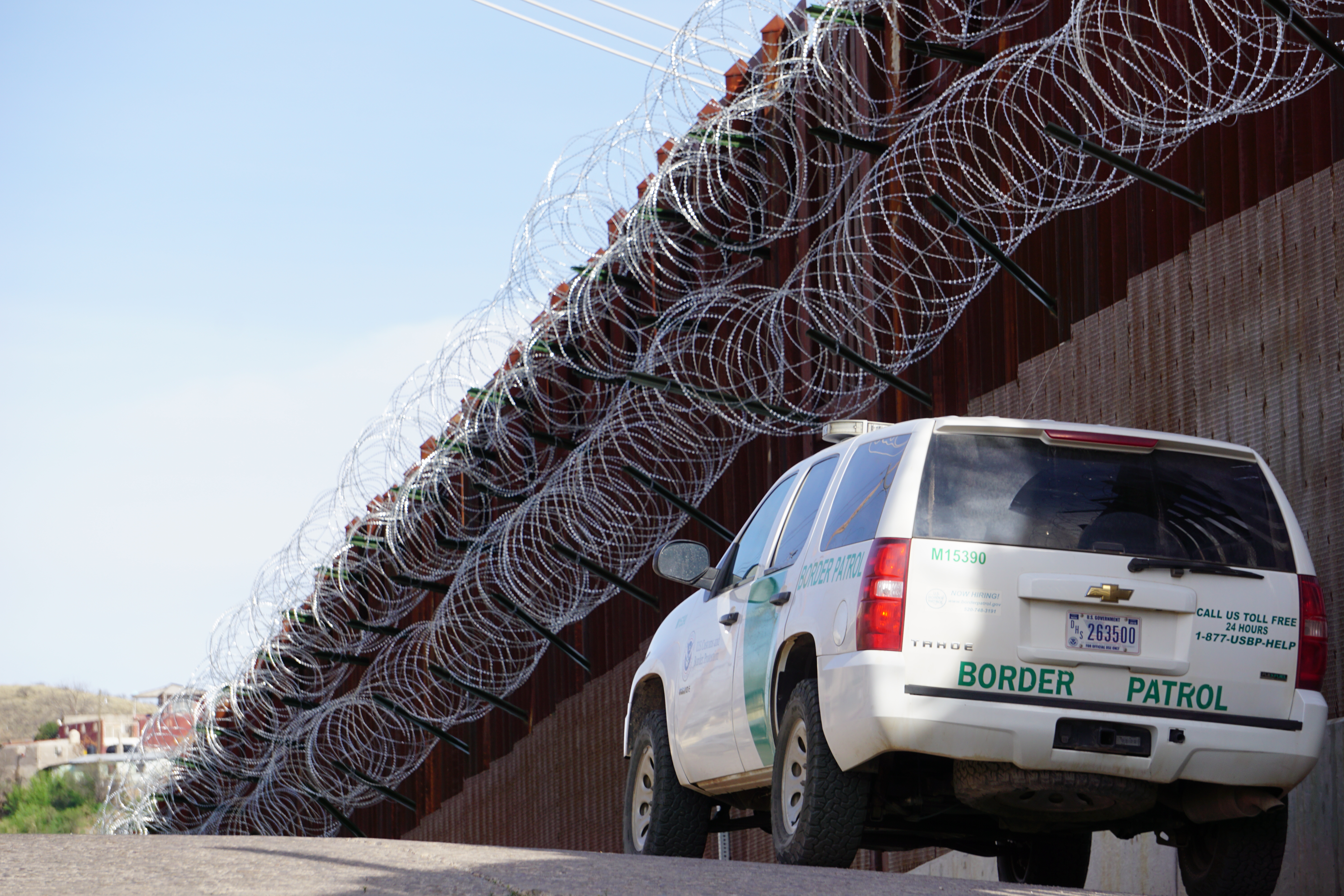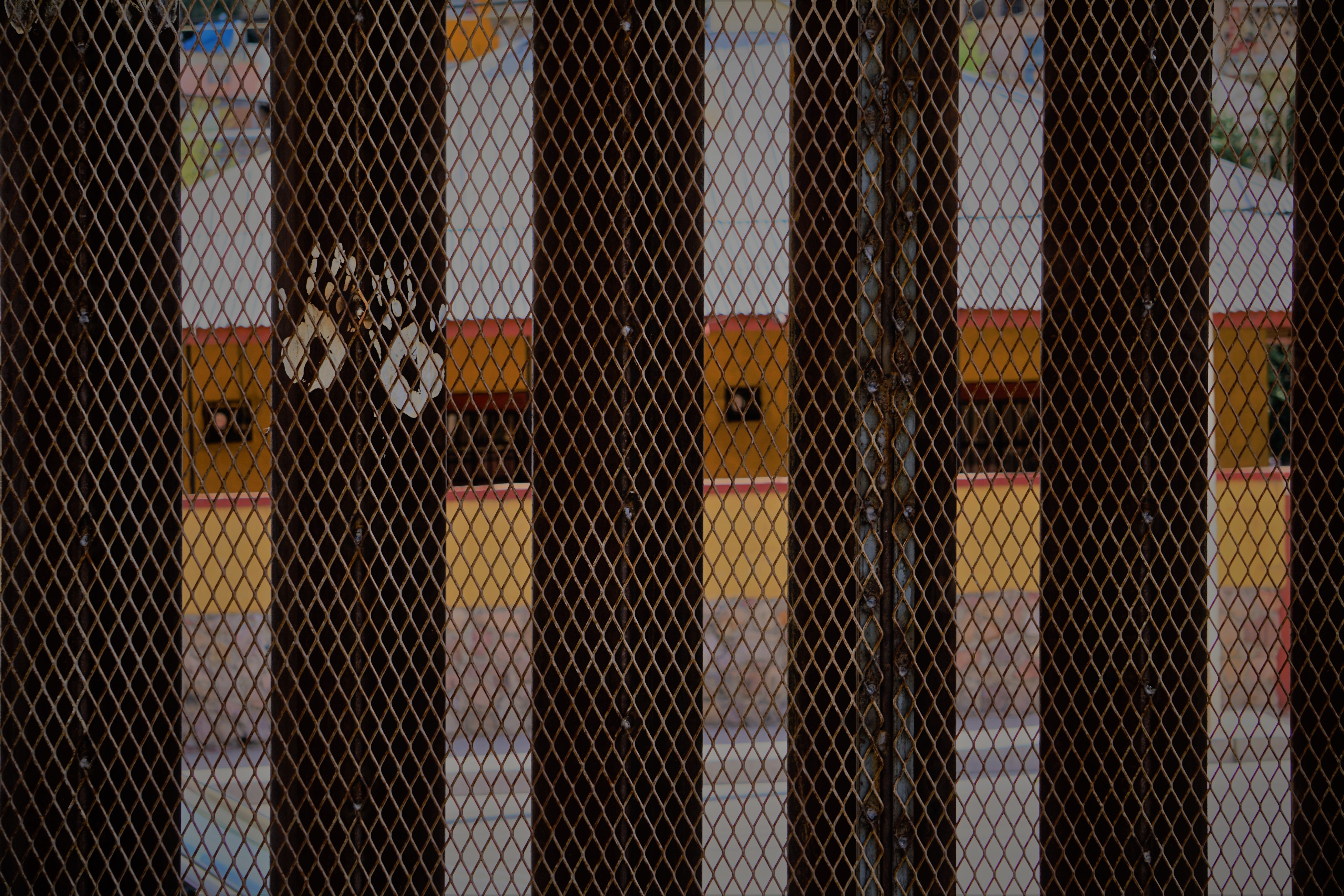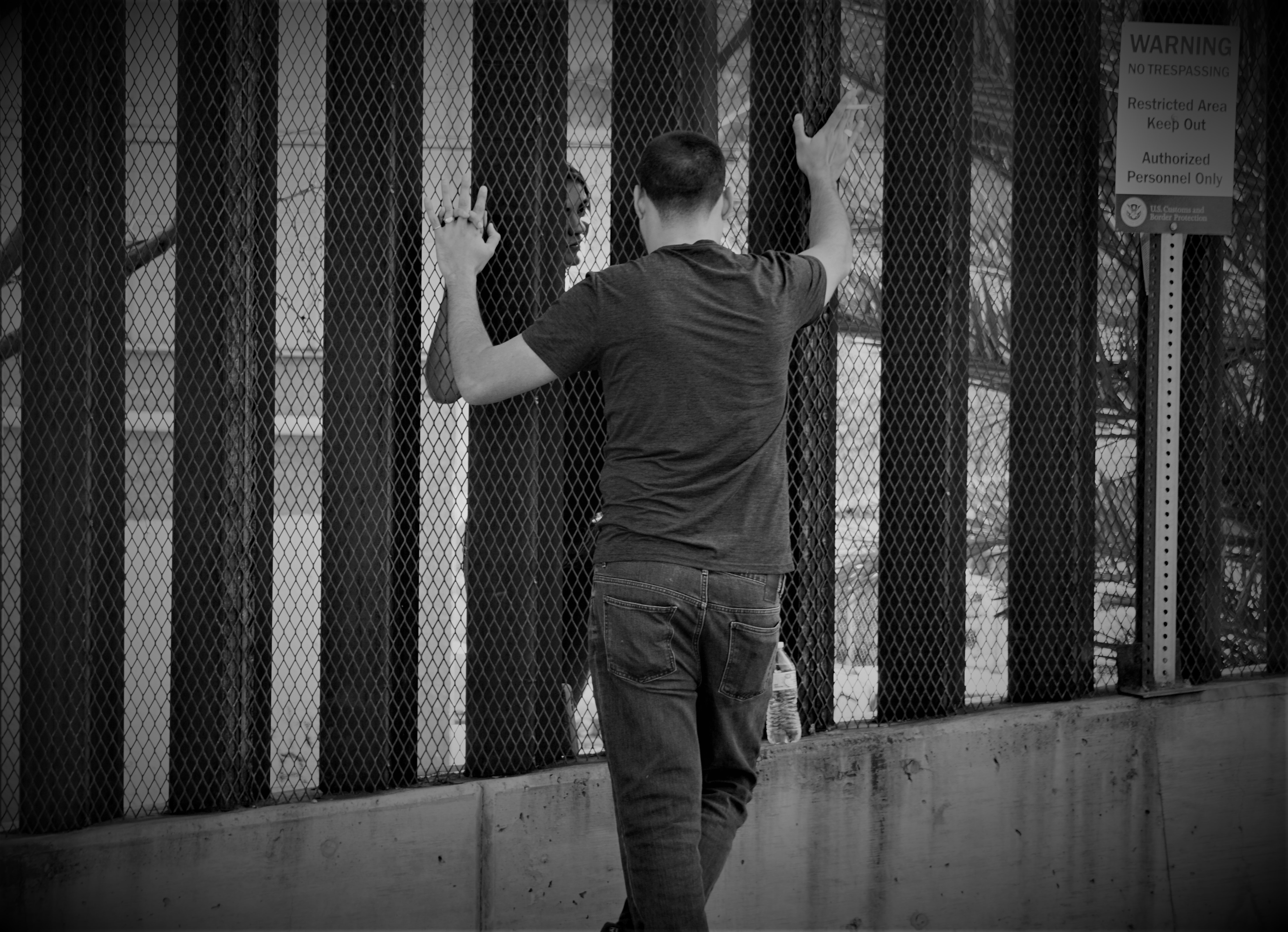I usually write about the environment. This planet is our mother, life-giver, and provider, and she needs to be protected. Recently, as part of a journalistic journey finding environmental problems and solutions, I traveled through the Mexico/U.S. border to the town of Magdalena. But during this trip, another kind of story raised its voice, so loud that I couldn’t possibly ignore it.
—
I arrived on a beautiful March day in Tucson, Arizona, to meet up with a social activist friend-by-association named Richard. My plan had been to meet up and get some idea of where to go in the border-town of Nogales to the south to get a decent snapshot of the new razor-wire that had recently been installed on the border wall. I’m not a fan of border walls in general, as they hinder migratory tendencies of animals and humans, promote xenophobia, and are ridiculously resource-intensive while also being laughably ineffective against the humans they are designed for. I wasn’t sure at this point exactly what angle I was going to go with as far as my story for the border, but something I enjoy about traveling work is that things usually flesh out as I go. This was going to be no exception.
I met Richard at an address of a home that he rents to a man who runs an unofficial homeless shelter during the day. The house acts as a space for homeless men to get out of the relentless Southwestern sun, as well as a place to do laundry, shower, and socialize. A local charity also provides food. The men, in turn, help with maintenance around the house and the yard, and keep everything tidy. The atmosphere was extremely friendly and supportive, and the experience was a new one for me.
After performing some rooftop maintenance, Richard took me to the street fair going on in town. On the edge of the fair was a Mexican restaurant, and the proprietors, Joe and Maria Garcia, needed a ride into Mexico the following day. The older couple could not make the drive anymore on their own for health reasons, so Richard agreed to drive them the next day. There would be room in the truck, so I agreed to come with on their excursion. They were bringing supplies to their other house in Mexico, where they are building a much-needed clinic- one of many humanitarian projects the lot of them has in the works. I stayed in town for the night and prepared for our journey in the morning.
—
The next day started bright and early. Richard got a call from Joe and Maria, who told us to come over for breakfast and coffee. We pulled up to their house, their two dogs barking at us on our way up the dirt driveway. Their old pickup was ready to be loaded. But first, coffee.
As Richard, Joe, and I sat at the table, coffee in hand, we all got to know each other better. The generations of women of the house bustled around the tiny kitchen as Joe steadily started to unravel his recent stories. Maria would chime in whenever he left something out, and together, they painted a picture I wasn’t prepared for.
Until recently, Joe was the Governor of the Mexican Tohono O’odham tribe. I specify Mexican because the tribe has two sides, one Mexican, one American. Their ancestral lands are divided by the Mexican-American border, a move they had no say in. A Presidential decree “gave” the Tohono O’odham the “right” to move freely across the border within their lands, across present-day Arizona and Sonora. At one time, there were no fences. Then, the U.S. put up fences with gates that were open to the tribe. Now, those gates open only for them during the day and are otherwise sealed, but this recent development has a surprising origin- it wasn’t sealed by the United States.
Breakfast tamales and coffee quickly turned into a rabbit-hole of borderlands history and policy. Joe and Maria told me about their tribe, and how the border fence was akin to “building a fence through a church,” as it went straight through their sacred lands. Joe himself almost got stopped at the border when transporting his late mother to her resting place.
The injustice got worse in the nineties when the U.S. implemented their “Prevention by Deterrence” policy at the border. This was when the U.S. government built fences in major crossing areas to curb the easy flow of Mexican migrants, most of whom would come to the U.S. to work for the day or the season before going back home. This policy made it harder for people without the money for proper papers to make it into the US for work. They now have to travel to remote areas of hot desert to cross, and many people die trying. In fact, 127 migrants bodies were discovered in the Southern Arizona desert in 2018, but that figure may well be much less than the real number of those who died making the treacherous journey. Bodies are hard to spot on the vast areas of scrub-covered desert, and heat and nature work quickly to decompose and scatter any remains. Even so, the recorded number of these deaths remain high, even as the number of migrants apprehended by Border Patrol has gone down 75% since the year 2000.

But Prevention by Deterrence didn’t seal the border gate for the Tohono O’odham. Not directly, anyway. The policy did make it harder to get into the U.S. for a lone crosser. But it opened up the opportunity for paid crossings. As border town populations boomed due to the border bottleneck, Mexican factories were built, and the labor that abounded was put to work to make products to export to the US. As the populations grew, so did the ranks of the Border Patrol. But this had an unintended consequence- gangs started to form in the border towns, making big money from cartels to smuggle people and drugs across the border. As it became harder to cross, these gangs were forced to become more organized, and began making more money. Police are now paid off and threatened into looking the other way. Smuggling is a booming business, and increased border security has made sure of it. The fact seems to be, that while a wall may stop a single person, it is entirely too low-tech to stop an organized crime syndicate from making their money, and the tougher the cross, the more money they make. At the end of the day, a wall only serves as a symbol of xenophobia.
For the Tohono O’odham, recourse to the closure of their gates is limited. The Mexican government refuses to acknowledge the fact that the cartel family that owns much of the border land in the region has unlawfully closed the gates. And since the land “granted” to them by the U.S. government was granted by decree rather than a treaty, they try not to rock the boat on this side of the border either. Especially since even treaties tend not to be upheld by the US when it comes to indigenous lands (most recently and famously at Standing Rock).
Today, the demographics of migrants have changed. The largely male, working Mexican border-crosser has given way to suffering refugee families from other Central American countries. The long trek through Mexico leaves them with nothing, and their refugee nature often leaves them without papers. The current US administrations dismal handling of the crises (created, in part, by past and current actions of the US government and multinational corporations in the affected Central-American countries) means that these refugees are met with an increasingly hard decision at the border. Do they try their luck going through the right way, risking being turned away outright? Do they look for work in the gang-infested factory towns along the border in Mexico? Or do they make a run for the border and legally apply for asylum after crossing?
For many, the choice seems clear. Only now, with the lack of available immigration judges and housing for these refugees, applying for asylum often means the separation of families and internment in concentration-camp overflow facilities. The “border crisis” is exactly that for these families, but it isn’t a crisis for the United States. As I said before, apprehensions are down 75% since the year 2000. The numbers of refugees we are now seeing are minimal in comparison to the 1.2 million person per year downward trend of migrants. The problem is that we aren’t equipped to handle caravans of non-Mexicans that we can’t “catch and release” back to Mexico. These are legitimate, legal refugees, and they take time to process in an overloaded and underfunded system. Diverting funding from wall-building to refugee facilities and immigration courts would significantly ease the strain at the border by weakening gangs on the Mexican side and preventing the humanitarian catastrophe of family separation on the U.S. side.

In the meantime, another one of my social-activist friends’ many projects is transforming an old monastery in Mexico into a sort of halfway house for refugee migrants, where they can rest and get better informed of their choices at the border. Many of the migrants arrive sick from the stress of the long journey, and the clinic Joe and Maria are working on could help with that as well.

Joe also recently stepped down as the Mexican Governor of the Tohono O’odham nation in order to preside over the allocation of the recently discovered “Fundo Mixto”- A fund held in offshore banks for well over a hundred years, started by former Mexican President Benito Juarez. A man of poor, indigenous origins, Juarez started the fund and left instructions that it was to be used for the betterment of the indigenous peoples of Mexico. Now that those instructions have been found, and the fund protected (even from the Mexican government), Joe will be the President of the indigenous group that decides how to spend the money. This is a boon for the indigenous poor in Mexico, and I don’t know of a better and more devoted person to preside over it.
After such an enlightening breakfast, I had much to think about on our ride into Mexico. It was my first time through the border, and I was surprised to find that the Mexican border patrol didn’t even ask us for our passports, but just waved us in. As we traveled south, there was a miles-long caravan of 18-wheelers backed up going the other way. Truckers were out of their trucks, conversing and waiting to export their goods. Meanwhile, there was one lone semi-truck at the commercial border check coming from the U.S. into Mexico. Seems like a pretty massive trade deficit was in effect.
Richard and I got dropped off at a men’s prison, where he proctors voluntary courses to the inmates about positivity and alternatives to violence. So not only was it my first time in Mexico, it was also my first time all the way inside a prison. After passing through the layered guards and gates, Richard rallied some inmates together and then brought everyone to a sitting area in the prison courtyard. There he introduced me to everyone that I hadn’t met already, translating when needed (My Spanish is rusty, much to the amusement and disappointment of my Cuban-Italian family, as well as old Colombian friends). I pieced together his talking points, and we all played some games and got to know each other. Most in our group were non-violent offenders already. One told me he got popped for smuggling marijuana. All had a disposition towards me and each other that was familiar, but I couldn’t at first put my finger on why. After the class was over and we said our goodbyes, Richard shot a quote my way that started to put it all together for me. He said, “Mexicans aren’t poor, they just don’t have much money.”
After a stop at the clinic to make a base of operations, Richard and I went for a tour of Magdalena. He had some supplements for a friend in a nursing home. On our walk, I saw how the people on the outskirts of Magdalena lived. It was nothing less than breathtakingly inspiring. These people had no money, but they had full lives. They built houses out of scraps of metal, wood, and plastic if need be. They upgraded materials when they could to clay or cement bricks. Families would have multiple small houses on a single property. The road to financial mobility was long, and its entirety could be seen just by walking down the street. The resourcefulness and ingenuity were remarkable, but there was something else that held it all together. It was that familiar thing that I had felt before. It was a good feeling. Warm and cozy. But I still couldn’t give it a name.
Richard and I wandered around town, with him telling me snippets of local history (he had previously lived in Magdalena) and explaining the town dynamic. We stopped at the nursing home, where we were greeted warmly and he was able to drop off the supplements. By this time, it was getting dark. We got some dinner at a local families gordita shop, and then went about getting a cab back up to clinic.
When we got to the top of the hill the clinic sat on, the lights of Magdalena were spread out before me. I reflected on the day I had, and right before I went to bed (When I do my best thinking), I finally figured out what that familiar feeling was that I’d had trouble identifying me all day. It was the feeling of unrestrained Community. Not the hard noun that literally describes any group of people living in proximity to each other. It was a feeling that flowed through everything. It was the feeling you get when you are home. It was the familiar feeling of family, but on a much larger scale.

In the United States, if someone with no money started building a live-in shack for themselves in their cousin’s yard, people would freak out. I realized that day exactly how extremely classist the word “eyesore” is. Some of the neighborhoods in the outskirts of Magdalena have gone through decades of slow transformation, aided not only by families gathering resources and materials, but by the fact that there was nobody coming down on them for not doing it “properly.” There were no snooty, complaining neighbors or Housing Authorities or police telling them to stop. I thought back to all the times I had heard someone use the word eyesore when describing something that somebody was doing out of necessity, and I realized the very use of the term creates a paradox.
The Eyesore Paradox, as I have now dubbed it, is defined by a perceived validity given to the user of the term by making them a victim. In most cases, however, the actual victim is the person trying to gain financial mobility and doing what is necessary in the meantime. The end goal of the term-user is to remove the “offending” structure, to the detriment of the builder. The result of which saves the user from an ailment that doesn’t exist, and impedes the financial mobility of the actual victim, which in turn creates other problems for the community at large that both the user and the victim belong to. For example, in Magdalena, I saw many ramshackle sheds built with all kinds of materials. But do you know what I didn’t see? Homeless people.
—
I met so many amazing, resourceful people that day in Mexico. But the next morning, it was time to get back on the road. We all climbed back into the truck and headed north to the city of Nogales, Mexico. This city is situated across from the American city of Nogales, as border towns often are. The two towns used to be fairly similar in size. But now, the Mexican side’s population has exploded. Every hillside is covered in housing. Factories line the side streets. And right up the middle, there is the road to the Border Wall entrance. This was nothing like the experience going into Mexico. Heavily armed guards and a tunneled entrance surrounded by cameras greet travelers into the United States. A Border Patrol Agent asked us several questions in addition to the relevant ones, seemingly in an effort to make us nervous. We were eventually sent along to a secondary stop, where we waited with other cars as a drug-sniffing dog went up and down the line several times.

All in all, it took almost two hours for us to get through the non-commercial gates. After that, we took a quick detour to a spot in town where you could park your car in a neighborhood pressed up against the border wall. My new friends told me stories of kids that had been shot by Border Patrol agents, very much akin to the stories of people of color getting arbitrarily shot by police in other areas of the country. Again, I flashed to the thought of community, and started to realize how separated we are in the industrialized world. Separated by class, race, religion, gender, and politics, yes. But also by police, avarice, the media, corruption, and lack of representation for the people that need it most.
It’s a mess. It’s crumbling all around us. Our lack of real community and collective action in the empiric U.S. and other “developed” nations is creating a dangerously unstable present and future. Our collective instability-by-separation is directly reflected by our planet. Our inner environment of radical individualism without a place for community has led to an outer environment of social and environmental injustice, violence, and extinction. The real state of humanity itself can be seen reflected in the waves of plastic washing ashore on our beaches, the apocalyptic floods, fires, and storms of climate change, and the systematic degradation of our air, land, and water.
Community is about people, but it is also about the environment, because whatever we sow in the first we reap in the latter.


Curtis I’m so touched by your report. Thanks for all tour efforts , how can i help?
Tanya
LikeLike
Best way is to subscribe to my patreon and become part of the Lieutenant Planet community! Patreon.com/lieutenantplanet
LikeLike